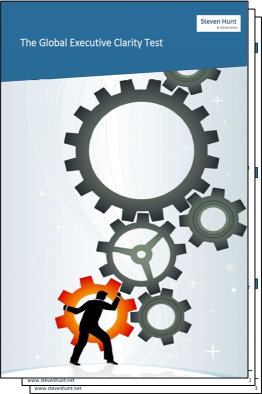To keep global projects running smoothly, you pre-dominantly use two types of feedback: positive feedback and constructive feedback. That’s easy to say, hard to do in many management cultures.
Whatever your good intentions were when you joined the company, if the culture is full of negative (or no) feedback, it’s an uphill battle to change it. But it can be done.
The case for positive feedback and constructive feedback
One reason for all that negative feedback is down to where we learn feedback. Most people (consciously) learn the concept of feedback in high school.
In science lessons, we’re taught about systems theory: remember “input-process-output”? If the output is wrong, you use feedback to change the inputs. If the output is right, you do nothing. This is great in science but not in management, where human emotions come into play.
In management, there only four types of feedback:
- No feedback: you say nothing
- Negative feedback: you say what was wrong
- Positive feedback: you say what was right
- Constructive feedback: you say what was wrong and how to put it right
Global initiatives thrive on two types of feedback: positive feedback and constructive feedback. Positive feedback motivates. Constructive feedback improves performance.
Negative feedback hides low self-esteem
Negative feedback is used by managers with low self-esteem. Their self-talk is, “I don’t value myself. Putting you down makes me feel better and more valuable than you.” This is a zero-sum game. And when too many managers do it, the culture becomes a killer; the organisation fails.
No feedback is not good feedback
Managers who give no feedback struggle. The signals are there for everyone to see.
They struggle to motivate people.
They hear bad news last – including customer complaints. Distance – both between country managers and head office and between time zones – intensifies the unwanted outcomes.
The people they lead fail to see new opportunities to serve their customers better. Why bother looking when there is no reward for improving performance?
Learn and let it go
The fact is, a few colleagues are only happy when they are putting you down. If you constantly get negative feedback or passive-aggressive silence, then do what elite athletes do. The answer is to use your self-esteem.

The champion golfer Annika Sörenstam has wonderful self-esteem. She jokes that she never hit a bad shot in her life. “I don’t remember them,” she says, “You’ve just got to learn how to dissociate… make a quick analysis, boom. Forget about it, move on, don’t carry it with you, learn from your mistakes. We all hit bad shots.” If you only get negative feedback, let it go.
Secondly, look at the source of feedback. Customer feedback is a top priority. Feedback from a technical expert on your skills is welcome. These sources are invaluable for improving performance. At times, feedback comes from people when you haven’t asked for it and it serves to boost their self-esteem, rather than your performance. Ignore it.
Create a culture of feedback with the Magic Ratio
Finally, there’s a simple solution to too much negative feedback. Get a Post-It note, count the number of times you give positive feedback today. And the number of times you give negative feedback.
A healthy feedback ratio is 5:1 (5 Positive to 1 Negative). This is the Magic Ratio because it sustains a long-term, constructive relationship.
With a ratio lower than 3:1 your relationship is in on the rocks. You’re also on unstable ground if the ratio is higher than 10:1 – others think you’re sycophantic.
The remarkable point is these ratios predict the breakdown of relationships with an 80% accuracy rate.
The Magic Ratio isn’t a cure all. On its own, it won’t turn a blame-game culture into a best-place-to-work feedback culture.
When you use it consistently – every day, every week, every month – you open the door to fast, honest feedback across locations and functions. You get information and insights which improve global performance. You motivate people and support innovative thinking. That leads to greater and faster growth, which is what everyone wants.
Image Attribution: LPGA photos taken by Keith Allison
















